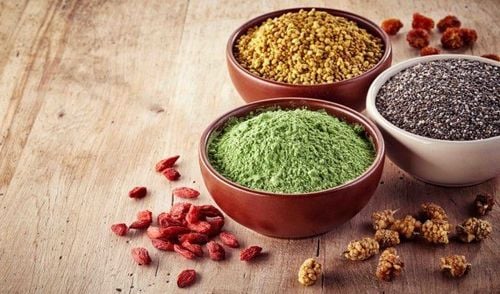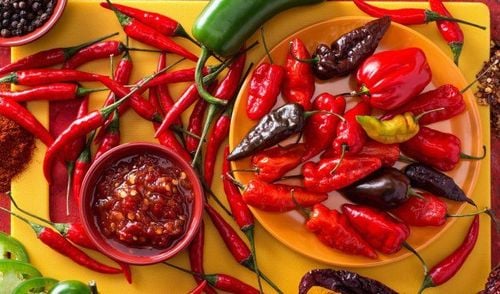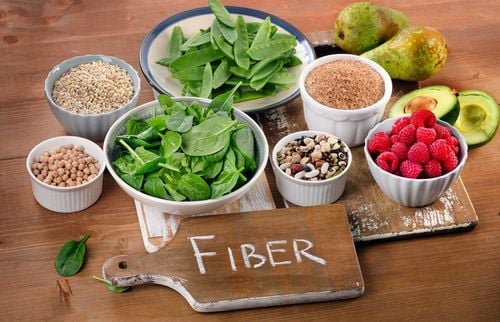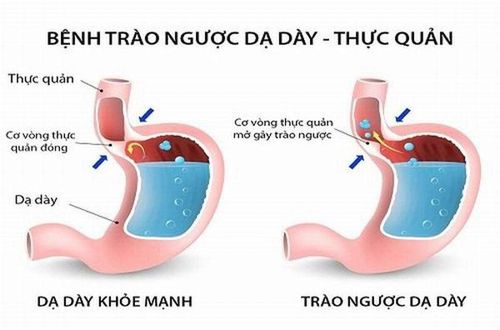This is an automatically translated article.
Today, we have gradually controlled many infectious diseases, but many diseases are related to diet such as heart disease, high blood pressure, cancer, diabetes, tooth decay, and others. . Let's join the following article to reinforce the knowledge about nutrients to build a healthy eating habit.1. Know Your Meal
Imagine a delicious and hearty dinner in front of you with half a skinless grilled chicken breast topped with half a cup of spaghetti sauce, half a cup of brown rice, and 2 cups of fresh steamed green beans. So let's see how much food and vitamins there are in such a dinner.Food energy 475 calories Protein : 36.4 g Carbohydrate: 63 g Fat: 11 g Saturated fat: 2.2 g Monosaturated fat: 4.4 g Polyunsaturated fat: 3.0 g Cholesterol : 73 mg Iron: 5.4 mg Calcium: 174 mg Phosphorus: 413 mg Sodium: 690 mg Potassium: 1522 mg Vitamin A : 1522 I.U Vitamin C : 38 mg Thiamin: 0.42 mg Riboflavin: 0.42 mg Niacin: 16.5 mg You may be skeptical about the healthy nature of this dinner. However, it is a dinner that is not only delicious but also nutritious, and if most of your meals are as healthy as this one, you will do a great job of reducing your risk of many chronic diseases. Since the fat component of this meal is only 21 percent of calories, saturated fat is below 5 percent. The cholesterol content in the meal is also low. In addition, the meal is relatively low in salt but contains a lot of potassium and vitamin A.
To choose healthy meals like these and avoid the dangers of a diet high in fat, cholesterol, sugar, salt and low carbohydrates, potassium, calcium you must know something about the nutrients that food has.

Cần chọn lựa những bữa ăn lành mạnh và đò ăn giàu chát béo
2. Understanding food
For the body, food is the source of many different nutrients, but there are also a large number of substances with no nutritional value contained in the food that we consume. Nutrients are the building blocks that the body needs to build and maintain itself. These nutrients are mainly carbohydrates and fats, but also protein for energy. Others like proteins and minerals are building materials.Vitamins and some trace elements and fatty acids are necessary for chemical reactions to generate energy for muscle movement or to regulate the body's metabolism. To function at its best, the body needs these nutrients in the right amounts. Too much or too little can and often leads to dysfunction in the body and causes diseases. Understanding the source of foods and the nutrient content they contain is important if you want to provide your body with nutritional balance.
3. Understanding the energy contained in food
Just like a car needs gas to run, your body needs fuel to do all the things it has to do every day. That fuel comes from food. Usable energy in food is measured in units called kilocalories or simply calories. About two-thirds of the body's energy is used to keep body temperature constant, to repair internal organs and skin, to keep the heart beating and lungs to breathe, and to ensure the right chemical balance inside. inside and outside the body's cells.Most adults need between 1300 and 1800 calories per day to sustain life without any physical activity. The remaining one-third of the energy is used to move the body through daily activities such as dressing, walking, sitting, exercising and all other muscle-using activities that we do. presently.
The amount of calories needed to add to the body depends on what we do during the day. The number of calories your body burns to perform an activity depends on your weight, how long you do the activity, and how much energy you expend to do the activity.
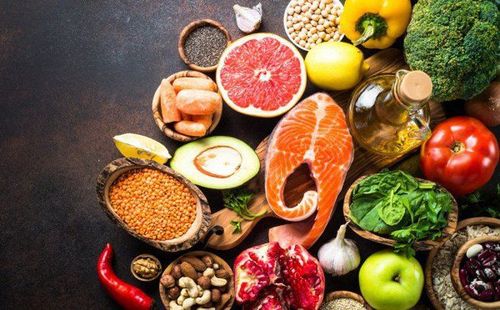
Năng lượng có thể sử dụng trong thực phẩm được đo bằng đơn vị gọi là kilocalories hoặc đơn giản là calo
For a sedentary female: 960 + 3.8 pounds. For women with moderate activity: 1120 + 4.5 pounds. For women who exercise regularly or do manual labor: 1280 + 5.1 weights. For physically inactive men: 1080 + 5.5 times weight. For men with moderate activity: 1260 + 6.4 times the weight. For men who exercise regularly or do manual labor: 1440 + 7.3 times weight Example: if a 150-pound man cycled every day for an hour, his daily energy needs would be more than 2500 calories a day (1440 + 7.3 times 150 = 2535).
The human body uses fat as its primary means of storing energy. When the body needs to draw energy from its reserves, it will prioritize using its fat reserves. It doesn't metabolize protein as a primary fuel source until most of the fat is gone. If on a given day your body needs to burn more energy than you eat, it will metabolize some of its fat stores at 9 calories per gram. That is why regular exercise can help a person lose weight.
On the other hand, if you eat more calories on a given day than your body uses, the body will use the excess energy to make fat molecules and store them in different fatty tissues. in the body. That's why you gain weight when you regularly eat more calories than your body uses.
4. Carbohydrates
The most important food energy sources are carbohydrates, and they are also the least calorie-dense sources. That is why the majority of the world's population relies on carbohydrates to meet most of their daily energy needs.Carbohydrates are one of the most abundant substances in the world, especially in the plant kingdom. Plants contain about 10 to 15 percent carbohydrates, while animals including humans contain only 1 percent carbohydrates.
Carbohydrate is a compound made of only three elements carbon, hydrogen and oxygen. These elements are arranged in rings, and rings can be strung together in chains ranging from two rings to thousands of rings.
Glucose, sucrose, fructose, maltose and lactose are common sugars. The body can either convert all of these sugars directly into energy or it can use them to make fat. Glucose and fructose are found in honey and fruit. Sucrose, maltose, and lactose are found in bile, in syrups, and in fruit. Starch is made up of hundreds or even thousands of glucose molecules, which are the most common digestible polysaccharides in the diet. They are also the main source of energy in our diet. Whole grains, beans, and some fruits and vegetables are good sources of starch. For example, nearly 90% of the calories in potatoes and 73% of the calories in pinto beans are from starch. In the digestive system, large starch molecules are broken down or digested into individual glucose molecules.
Fiber is a complex mixture of many indigestible substances, most of which are non-starch polysaccharides. The main difference between indigestible polysaccharides and starch is in both soluble and insoluble fiber. The chemical bonds between the individual molecules together as a chain are resistant to the processes of the human digestive system. Therefore, they provide less food energy for the body. Although fiber has little calorific value to humans, it appears to be necessary for the large intestine to function at its peak.
In general, foods high in fiber include wholegrain breads and cereals, fruits, vegetables, beans, peas, and nuts. Fruit skins, seeds, berries and bran layers of whole grains are richer sources of fiber than the rest of the foods.
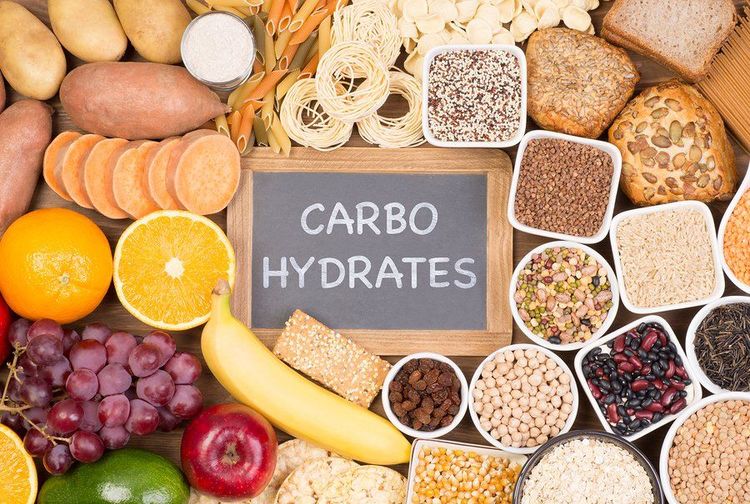
Carbohydrate là một trong những chất phong phú nhất trên thế giới, đặc biệt là trong giới thực vật
5. Fat
Fat takes second place after carbohydrates as an energy source. Fat is a large compound made mainly of the elements carbon and hydrogen, with a small amount of oxygen. The main fat in foods is triglycerides, a molecule of glycerol with three fatty acids attached.Foods that are almost pure fat include cooking oil, lard, butter, margarine and shortening. Foods that contain significant amounts of fat include meat, dairy products, chocolate, cakes, baked goods, cookies, nuts, and some fruits and vegetables - for example coconuts and butter.
One characteristic of fats is that they do not mix or dissolve in water. Instead, fat molecules tend to clump together with other fat molecules.
Plant foods, with the notable exception of palm oil and coconut are good sources of polyunsaturated fatty acids. Seafood is rich in monounsaturated fatty acids and polyunsaturated fatty acids. Fats with a large proportion of monounsaturated fatty acids and polyunsaturated fatty acids are often liquid even when refrigerated.
6. Cholesterol
There are certain substances in foods that are not exactly fats but, like fats, are miscible with water. One of these substances is cholesterol.Cholesterol exists in foods of animal origin and in the body, where it is an important component of many tissues, especially the brain and nervous system. Cholesterol is found in all cells of the body as a structural part of cell membranes. However, the body also uses cholesterol to make bile acids, various hormones, and vitamin D. Cholesterol is not an essential nutrient because the body can't produce all of it.
However, sources of cholesterol are found in abundance in egg yolks, liver, meat, some shellfish and whole dairy products. Cholesterol is not found in plant foods.
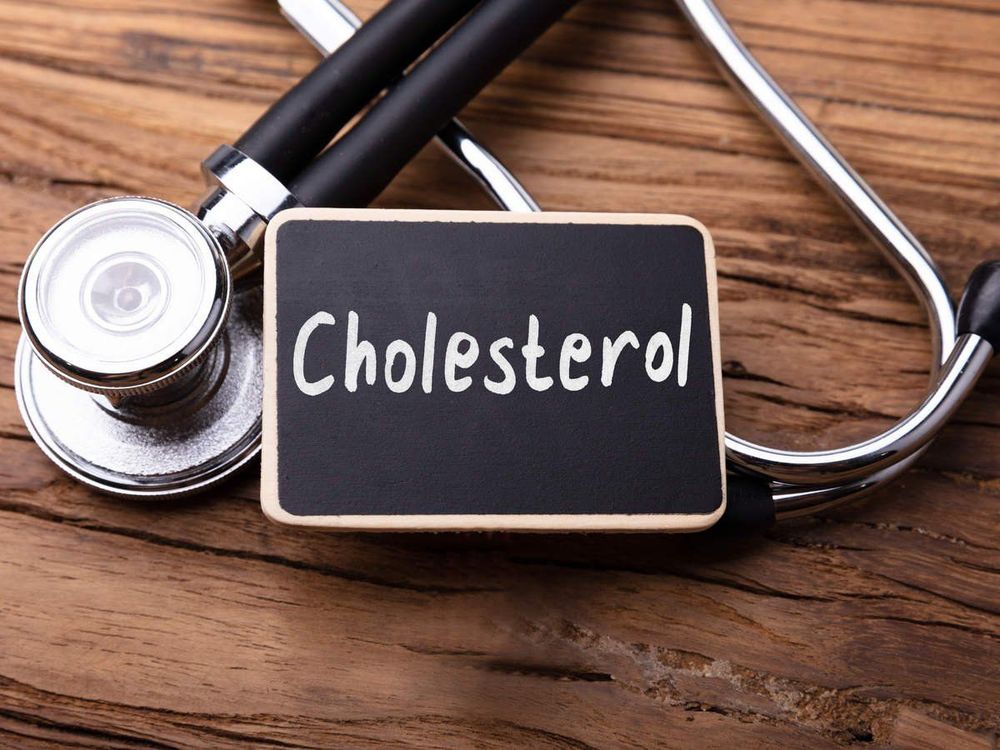
Cholesterol tồn tại trong thực phẩm có nguồn gốc động vật và trong cơ thể, nơi nó là thành phần quan trọng của nhiều mô, đặc biệt là não và hệ thần kinh
7. Protein
If carbohydrates and fats are the body's source of energy, then protein is the body's building block. Excluding water, protein makes up about three-quarters of the weight in most body tissues. Hair, skin, nails, and muscles are mostly protein, and bones also contain significant amounts of protein. Certain proteins, called enzymes, carry out a multitude of chemical reactions necessary to produce the energy that sustains the body and produce thousands of different molecules found in muscles, bones, skin, hair and organs.In fact, protein is the only source of essential amino acids in the diet. When you eat a piece of chicken, your digestive system breaks down the protein molecules in that chicken muscle into individual amino acids. They are absorbed into the blood stream and transported to all cells in the body. Enzymes and other biomolecules inside the cell assemble the amino acids into the proteins the cell needs.
The body does not store significant amounts of amino acids, and so we must eat protein regularly. Meat is a rich source of protein, as muscle is protein with fat mixed in. Beans, nuts, and whole grains are also good sources of protein.
8. Vitamins
Vitamins are a diverse group of compounds that the body needs in small amounts to stay healthy. They are used in many biochemical processes. For example, vitamin K plays an important role in blood clotting, vitamin D participates in calcium absorption and thus maintains bones in good condition. Some of the functions of vitamins are listed with food sources inWhen they were first discovered around the turn of this century, vitamins were classified according to whether they were water soluble. The fat-soluble vitamins are vitamins A, D, E, and K. The water-soluble vitamins are vitamin C and the eight B vitamins — thiamin, riboflavin, niacin, pyridoxine, pantothenic acid, biotin, folacin, and cobalamin.
Fat-soluble vitamins are found with fats in foods, and they are also absorbed from the digestive system along with fats. The body can store varying amounts of fat-soluble vitamins. Excessive consumption of fat-soluble vitamins causes them to accumulate in the body, leading to toxic levels. Vitamin A and vitamin D poisoning can cause serious illness and even death.
Some vitamins are produced in the body like vitamin D is made in the skin when exposed to sunlight. Bacteria that live in the human gut produce vitamin K, which is then absorbed into the bloodstream.

Vitamin là một nhóm các hợp chất đa dạng mà cơ thể cần một lượng nhỏ để duy trì sức khỏe
9. Minerals
Like vitamins, minerals play many different roles in the body. Certain minerals such as calcium and phosphorus are present in the body in relatively large amounts and are sometimes called macrominerals. Other minerals, such as iron and copper are essential in much lower amounts and are known as trace elements. The three macrominerals, sodium, potassium, and chloride, are sometimes called electrolytes, because they help maintain the proper electrical balance in cells and body fluids. Together, minerals make up only about 4% of body weight.Salt is a combination of negative and positive components called ions. For example, table salt is made of positively charged sodium ions and negatively charged chloride ions. When table salt is dissolved in water, it again dissociates into sodium and chloride ions. Sodium bicarbonate is the salt we call baking soda.
A healthy diet plays an important role in forming a strong body. So, learn about the properties of foods and how they are absorbed now to ensure you have a healthy eating habit.
Please dial HOTLINE for more information or register for an appointment HERE. Download MyVinmec app to make appointments faster and to manage your bookings easily.
Article referenced source: NCBI



